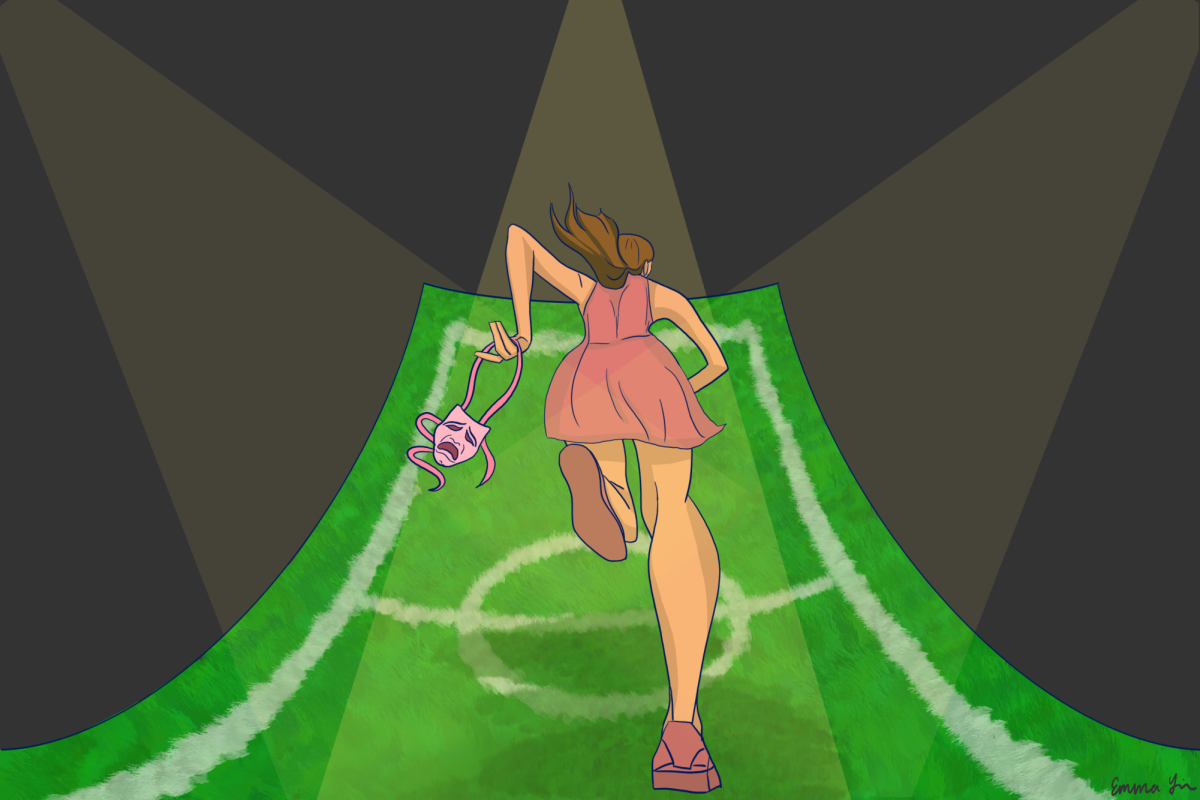After a long day of school, a student has a few moments to shove food in their mouth before heading off to warmups. Despite the immense time and energy, practice is rewarding. It’s dark outside when they finally get home, and they still have homework.
This is the life of a thespian. As actors immerse themselves in the extensive rehearsal process that takes hours out of their free time, it begs the question: Shouldn’t these dedicated students receive academic credit for the invaluable lessons learned under the spotlight?
Before answering this question, it is essential to understand who gets graduation credit for participating in extracurricular activities in the Sequoia Union High School District (SUHSD). To this day, only athletes get credit for their involvement in a sport at school.
According to Athletic Director Patrick Smith, all student-athletes, regardless of their sport, will receive 3.5 physical education (PE) credits on their transcript for each season.
Smith estimated that a sports season typically lasts anywhere from 130 to 150 hours, making it fitting for academic credit recognition.
According to Elizabeth Berg, Carlmont’s Performing Arts Director, a typical play requires a commitment ranging from 80 to 100 hours, while a musical, depending on the complexity of the actors’ roles, demands an investment of approximately 110 to 130 hours.
Despite the two- to three-month process it takes to put on a production, thespians are not getting any recognition or art credit for their efforts.
California’s educational mandate requires all students to complete at least two years of physical education (PE) or accumulate 20 sanctioned athletic participation credits to meet graduation requirements. Given that all first-year students take PE classes worth 10 credits, athletes benefit from the flexibility of fulfilling their second year of PE by participating in multiple seasons of a sport.
Similarly, students must complete a year of visual or performing arts classes, totaling 10 credits, as part of their academic curriculum.
Currently, enrolling in a qualified art class is the only avenue available for students to fulfill this requirement. Considering this mandatory requirement, students engaged in a performing arts production of the school play or musical—where they acquire skills typical of a drama class, such as script work, blocking, and community building—could potentially fulfill the art credit. This would, in turn, allow them to allocate their academic efforts toward another class.
Alternatively, if the student opts to retain an art class in their schedule, the credit received would prove beneficial as it spills over into the elective category.
Since students need 60 elective credits for graduation, theater participation could also count towards this requirement.
The district’s lack of recognition of students involved in the performing arts appears to contradict the stated values of SUHSD, which professes to “value equity.” If equity is a core principle, then recognition should extend to athletes and thespians since students are involved in both types of extracurriculars. The current system of only rewarding athletes with academic credit fails to acknowledge the hard work of those in the performing arts and perpetuates an inequitable distribution of credit.
Recognizing the actors’ efforts on their transcripts would validate their commitment and dedication to their craft and contribute to a more equitable and inclusive academic environment that could also serve as a potential benefit in a college application.
Because participation in a sport can sometimes demand more time than a school production, some may argue that the time commitments between a sports season and a school production are incomparable, justifying the SUHSD’s reluctance to award credit or recognition to the athletes.
However, considering the vast amount of hours invested in performing arts, SUHSD could extend proportionate credit within the arts category based on typical hours spent per production
Additionally, according to Gay Buckland-Murray, Carlmont’s principal, the SUHSD can choose to document a student’s involvement in a production in the “comments section” of a transcript if they decide not to award credit for the production. Despite this option, thespians find nothing but their courses on their transcript. Furthermore, an actor’s involvement is not transferred to colleges unless they manually input it in the extracurricular section. Conversely, athletes’ accomplishments are submitted directly to schools when they send their transcripts.
It’s essential to move beyond the current status quo and ensure that all students involved in Carlmont extracurriculars, regardless if they are a thespian or athlete, receive the acknowledgment they deserve on their academic records.
The award of art credits aligns with the professed equity values at SUSHD and fosters an environment where every student’s contributions are valued and celebrated. Thespians want and deserve to receive “credit” for their work on stage.
*This editorial reflects the views of the Scot Scoop Editorial Staff and was written by Ben Romanowsky. The Editorial Staff staff voted 4 in agreement, 8 somewhat in agreement, 3 in disagreement, and 1 refrained from voting.













